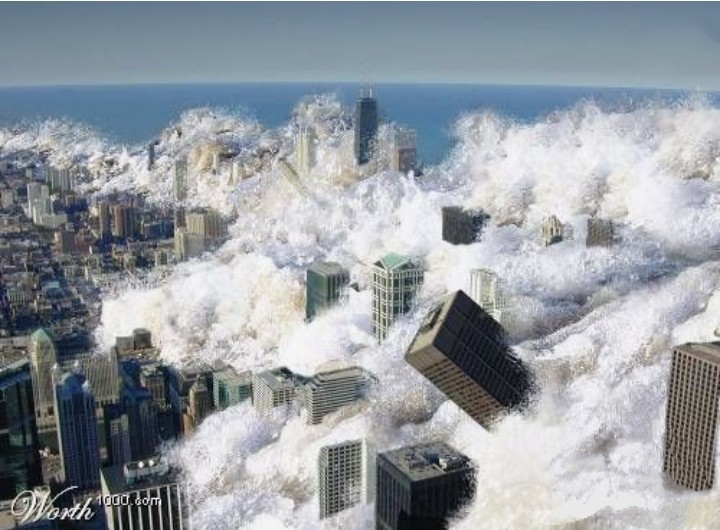Arctic Ocean
ARCTIC OCEAN
About Arctic Ocean:
* The smallest and shallowest
* Area about 1,40,56,000 km²
* Covers approx:
- 3% of Earths surface area
- 1.3% of Earths water. surface area.
* Location- in Arctic north polar region and is surrounded by the land masses of Eurasia, North America, Greenland, and by several Islands.
* The International Hydrographic Organisation (IHO) recognitions it is an Ocean.
* Lies in entirely within the Arctic Circle
*Occupies a roughly circular basin
* Salinity is lowest on average of the major Oceans
* The US " National Snow and Ice data Centre ( NSIDC) - with satellite data- provide daily record of Arctic sea ice cover and the rate of Its melting.
* Partly covered by sea ice throughout the year and almost completely in winter.
* Contains deep basins, the slowest spreading ridges in the world, and about 15% of the world shelf seas.
* Sea Shelf- relatively shallow waters that fridge the continents.
* Shelf surrounding an island is known as an insular shelf.
* Area of the Artic Shelves is almost half of the area of the deep Arctic basins
Depth of Arctic Ocean:
* The average depth is 1,038m
* Deepest Point: Molloy Deep ( Hole) in the Farm strait, in Greenland sea, East of Greenland at about 5,557m (18,210ft)
Arctic Joins Pacific - Barring Sea
Arctic Joins Atlantic - Labrador Sea
Greenland Sea
Norwegian Sea
Arctic Shelves -
* Comprises a number of continetal shelves, Two major shelves.
-Canadian Arctic Shelf
-Russian Arctic Shelf
* Consists 3 separate and smaller shelves:
- Baurents Shelf
- Chukchi Sea Shelf
- Siberian Shelf
Canadian Arctic Shelf -
* Underlying Canadian Arctic Archipelago groups togather 36, 563 islands.
* Bounded by - West- Beaufort Sea, East - Greenland, Baffin Bay and Davies Strait South - Hudson Bay and Canadian mainland Northern most point on Ellesmere Island.
Russian Continental Shelf -
Popularly called the Arctic Shelf because it is grater in extent.
Consists of 3 separate and smaller shelves
1. Barents shelf: located in Barents Sea ( also known as the Arctic warming hot spot)
2. Siberian Shelf: Largest Shelf in the world: Holds large oil and gas reserves.
3. Chukchi Shelf: froms border between Russia and US ( as stated in the USSR - USA Maritime Boundary Agreement)
Arctic Ridge and Basins:
* Mid- Ocean Ridge (MOR) - a seafloor mountain system formed by plate tectonics.
* 3 major Arctic Ridges - Lomonsov. Gakkel and Alpha
1. Lomonsov Ridges:
* Divides Arctic Basin into Eurasian Basin and Amerasian Basin
* 1800 km long lies over the central part of the Ocean between new Siberian Islands and Ellesmere Island
Eurasia Basin is bounded by Greenland.
Lomonsov Ridges, and shelves of Laptev Sea, Kara Sea and Barents Sea.
2. Gekkel Ridge:
Further Spilts Eurasian Basin into
a. Amudsen Basin
b. Nansen Basin
* Amudsen Basin - deepest one of Arctic Ocean
* Geographic North Pole is located here
* Amerasian Basin - triangular shaped broadly extends from Canadian Arctic islands to East Siberian sea, and from Alaska to. Lomonsov Ridge
3.Alpha Ridge: Major volcanic ridge between Canada Basin ( off Ellesmere Island) and the Lomonsov Ridge Splits Amerasian Basin into Canada Basin and Makarov Basin
Navigable Through the Arctic Ocean
* Two potentially important navigation channels - connect Pacific with Atlantic Ocean
1. Northwest passage - Sea route across Northern Coast of North America and Through Canadian Arctic Archipelago
* Arctic Ocean is completely covered by ice during winters
2. Northern Sea Route - Sea Route across the Northern Coast of the Eurasian continent.
Sea Ice
* Much of Arctic Ocean covered by sea ice ( frozen Ocean water)
* It forms, grows, and melts in the Ocean
* Varies in extent and thickness seasonally - maximum in April, minimum in September
* Arctic sea ice keeps polar regions cool and helps moderate global climate
* Sea Ice has bright surface - 80% of sunlight reflected back into space
*As it melts - exposes dark ocean surface - absorbs 90% of sunlight - Ocean heat up
.
" Threat"
1.Arctic Ice melting-
*Mean extent of ice decreasing since 1980 rate of 3% per decade.
* Ice melting may
cause large amounts of fresh water to enter North Atlantic, possibly disrupting global Ocean current patterns
* Sea level rises- submergence and hazardous storms
* Icebergs breaking away - hazards to ship's
* Increased encounters between polar bears and humans - in search for new sources of food
* In February 2019- mass invasion of polar bears into the Archipilago of Novaya Zemlya caused local authorities to declare a state of emergency
2. Radioactive Contamination -
Due to Sunken nuclear reactors and submarines and buried toxic waste
Examples:
In the Kara Sea, Novaya Zemlya and Greenland
To
The biggest ever Ozone Hole (3 times the size of Greenland) got closed on 23 rd April, after a month
Arctic Opening :
Arare and record ozone hole has formed over the Arctic. An opening in the ozone layer appears each spring over the Antarctic, but the last time this phenomenon was seen in the north was in 2011.









Comments
Post a Comment